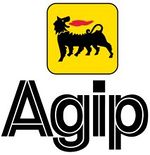Difference between revisions of "Off-Sea Evaluation of Unlicensed Mining Blocks in the North Sea"
(Purpose Heading and Info added (Brad)) |
(Data Collection Summary added) |
||
| Line 25: | Line 25: | ||
===Data Collection=== |
===Data Collection=== |
||
| + | To do a proper analysis data is needed on the area and all of the constraints involved. We used data from the internet and data we created ourselves. Data and corresponding source sites are listed below. |
||
| − | The well and coastline data was collected from the [http://en.wikipedia.org/wiki/Department_of_Energy_and_Climate_Change Department of Energy and Climate Change (UK)], downloaded from: [http://og.decc.gov.uk/en/olgs/cms/data_maps/offshore_maps/offshore_maps.aspx DECC Download Directory]. |
||
{| border="1" cellpadding="5" cellspacing="0" align="center" |
{| border="1" cellpadding="5" cellspacing="0" align="center" |
||
Revision as of 16:19, 10 December 2012
Contents
Introduction
Purpose
The purpose of this project is to develop a way to evaluate oil well suitability in the North Sea. This tutorial will demonstrate how an employee of an oil company with no GIS experience but with an interest in North Sea oil could determine the wells that are most suitable for their company to pursue. This tutorial will analyze well locations in the North Sea from the perspective of Agip, a subsidiary of the Italian Oil company ENI, and owner of some wells in the North Sea. The tutorial will evaluate criteria related to depth, port distance, proximity to other company owned wells, and environmental factors to determine suitability.
Background
This is a hypothetical situation in which oil companies interested purchasing licensed or non-licensed wells off-shore Britain, need assistance from Carleton University using open source software to reduce costs. A variety of factors need to be considered to determine which wells are prime targets for each company to purchase.
The following is a list of factors used in this study:
- Distance from Coastline
- Depth of Well
- Licensed or Unlicensed (Ownership)
- Environmental Concerns
- Legal Boundaries
- Proximity to neighboring cells
Methods
Software Preparation
Download Quantuam GIS from QGIS.org The most recent version of QGIS is Lisboa 1.7 which is available in Windows, Linux, MacOS X, Android and numerous other formats. This walk-through uses Windows for the duration of the analysis.
Data Collection
To do a proper analysis data is needed on the area and all of the constraints involved. We used data from the internet and data we created ourselves. Data and corresponding source sites are listed below.
| Data Type | Data Format | Data Source/Info |
|---|---|---|
| Coastline of United Kingdom | Vector Polygon | Department of Energy and Climate Change Layer: low-resolution coastline of mainland Britain, December, 2012. |
| Significant Discoveries | Vector Polygon | Department of Energy and Climate Change Layer: discoveries identified by DECC as "significant" in terms of flow rate. Does not indicate commercial potential, but identifies those with an approved or in-production field development plan, December, 2012. |
| Wells | Vector Polygon | Department of Energy and Climate Change Layer: surface locations of all UK onshore and offshore wells. December, 2012 |
Data Preparation
Various layers needed to clipped so that were relevant to the study.
- Wells file contained points that were both on-shore and off-shore. The wells file needed to be clipped by the coastline file
- Coastline polygon had to be reduced to only include the mainland, removing Ireland and small islands
Results
Ideal Well has the following characteristics
- Close to processing Plants
- Low Water Depth
- No current ownership

